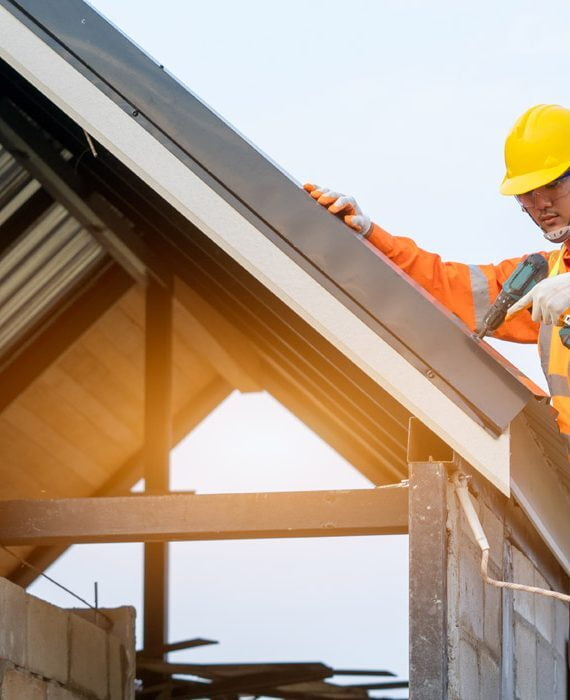A well-maintained deck can significantly enhance the beauty and functionality of your outdoor space. To ensure its longevity and protect it from the elements waterproofing is essential. In this comprehensive guide, we'll walk you through how to waterproof the deck to keep it looking great and standing strong for years to come.
1. Assess the Current Condition:
Before you begin waterproofing, carefully inspect your deck for any signs of damage, such as cracks, splinters, or rotting wood. Address these issues first to ensure a solid foundation for the waterproofing process.
2. Choose the Right Time:
Opt for a stretch of clear, dry weather to carry out the waterproofing. This will allow the products to set and cure effectively without being washed away by rain.
3. Gather the Necessary Tools and Materials:
Here's a list of commonly needed items:
- Deck cleaner
- Power washer or scrub brush
- Sandpaper or sander
- Waterproofing sealant/stain
- Paintbrushes, rollers, or sprayers
- Safety gear (gloves, goggles, etc.)
4. Clean the Deck:
Thoroughly clean your deck to remove dirt, grime, and any old finish. Use a deck cleaner and either a power washer or a scrub brush. Waterproof services ensure that the waterproofing products adhere properly.
5. Sanding and Repairs:
Sand any rough spots to create a smooth surface. Replace any damaged boards and fill in cracks with an appropriate filler. Ensuring a level surface is crucial for the waterproofing to be effective.
6. Choose a Waterproofing Product:
There are various options available, such as waterproofing sealants and stains. Consider factors like the appearance you desire (transparent, semi-transparent, or solid color) and the level of protection you need against UV rays and moisture.
7. Apply the Waterproofing Sealant/Stain:
Follow the manufacturer's instructions for application. Generally, you'll use a paintbrush, roller, or sprayer to evenly apply the product. Start from one end and work your way to the other, ensuring no overlap marks or missed spots.
8. Pay Attention to Details:
Coat all surfaces, including railings, steps, and any hard-to-reach corners. Be meticulous in your application to guarantee complete coverage and protection.
9. Allow Proper Drying Time:
Give the sealant/stain sufficient time to dry and cure. This usually takes a couple of days, but follow the product guidelines for precise timings.
10. Regular Maintenance:
Even with waterproofing, your deck will still require routine maintenance. Check for signs of wear, and reapply waterproofing as needed, typically every 1-3 years.
11. Additional Tips:
- Consider applying a second coat for added protection, especially if you opted for a transparent or semi-transparent finish.
- Be cautious when walking on the deck during and after the waterproofing process to avoid disturbing the product.
- Protect surrounding areas, such as plants and furniture, from any splatters or drips during application.
Waterproofing your deck is an investment that will pay off in the long run by preserving the beauty and structural integrity of your outdoor space. By following these steps and being diligent in your maintenance efforts, you can enjoy a stunning deck for many years to come, come rain or shine.
Waterproof Balcony Flooring - Flooring Essentials
Waterproof Balcony Flooring - Flooring Essentials
Waterproof Balcony Flooring - Flooring Essentials
A balcony serves as a delightful extension of your living space, offering a place to relax and enjoy the outdoors. To ensure the longevity and visual appeal of your balcony, waterproofing the flooring is essential. If you are searching for balcony repair near me, we'll take you through the process of selecting, preparing, and installing waterproof flooring for your balcony.
1. Assess the Balcony's Condition:
Before you begin any waterproofing project, inspect your balcony for any signs of damage, such as cracks, water stains, or deteriorating surfaces. Address these issues to create a solid foundation for the waterproofing process.
2. Choose the Right Flooring Material:
There are several waterproof companies available, each with its advantages. Some popular choices include:
- Outdoor Tiles: Porcelain or ceramic tiles can withstand moisture and temperature changes while offering a wide range of designs.
- Vinyl Flooring: Waterproof vinyl planks or tiles come in various styles and are relatively easy to install.
- Rubber Flooring: Durable and slip-resistant, rubber flooring is an excellent choice for balconies that receive heavy foot traffic.
- Composite Decking: Made from a blend of wood fibers and recycled plastics, composite decking offers the appearance of wood without maintenance.
3. Prepare the Balcony Surface:
Proper preparation is crucial for the success of your waterproofing project. Depending on the flooring material chosen, you might need to:
- Clean the surface thoroughly to remove dirt, debris, and old finishes.
- Repair any cracks or holes in the concrete or wood substrate.
- Level the surface if necessary to prevent water pooling.
4. Apply Waterproofing Membrane:
For an added layer of protection, consider applying a waterproofing membrane before installing the flooring. This membrane acts as a barrier against moisture infiltration and prevents water damage to the underlying structure.
5. Install the Chosen Flooring:
Follow the manufacturer's instructions for installing the chosen waterproof flooring material. The installation process will vary depending on the type of flooring you've selected. Make sure to use the appropriate adhesives and fasteners recommended by the manufacturer.
6. Seal the Joints and Edges:
Pay special attention to the edges and joints of the flooring. Use a waterproof sealant to prevent water from seeping in through these vulnerable areas. This step is crucial to maintain the integrity of the waterproofing.
7. Regular Maintenance:
Even with waterproof flooring, it's essential to conduct regular maintenance to ensure its longevity. Clean the surface regularly to prevent the buildup of dirt and grime that can compromise the waterproofing.
8. Safety Considerations:
Ensure the flooring you choose is slip-resistant to prevent accidents, especially when the balcony gets wet. Safety should always be a priority.
9. Personalization and Aesthetics:
While prioritizing functionality and durability, don't forget about the visual appeal of your balcony. Choose flooring that complements your overall design aesthetic and enhances the beauty of your outdoor space.
Conclusion:
Conclusion:
Waterproof balcony flooring is a smart investment that not only protects your balcony from water damage but also enhances its beauty and functionality. By selecting the right flooring material, preparing the surface properly, and following the installation guidelines, you can create a welcoming outdoor space that will bring you joy for years to come, whatever the weather.


